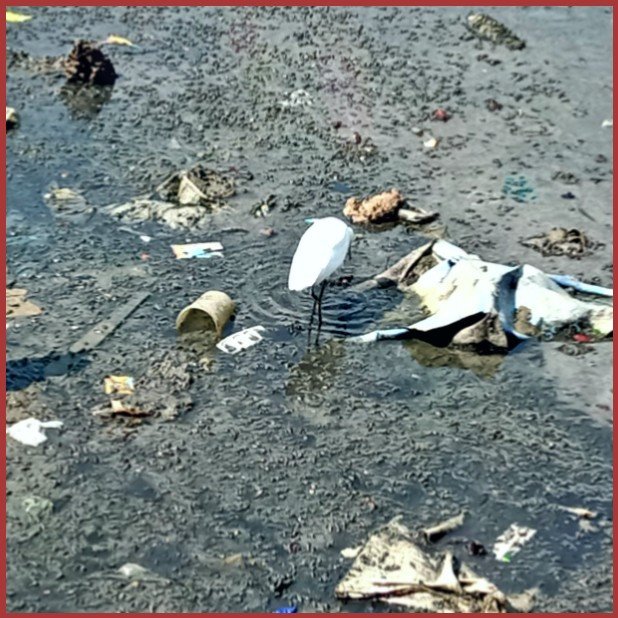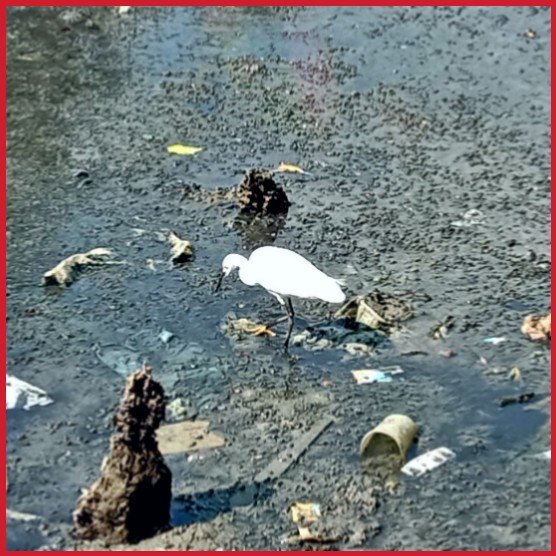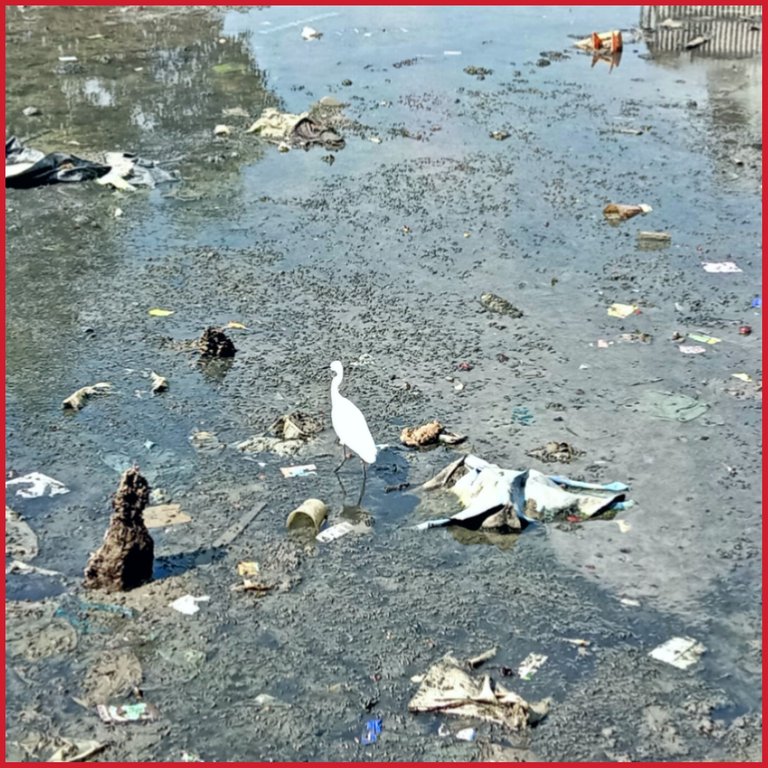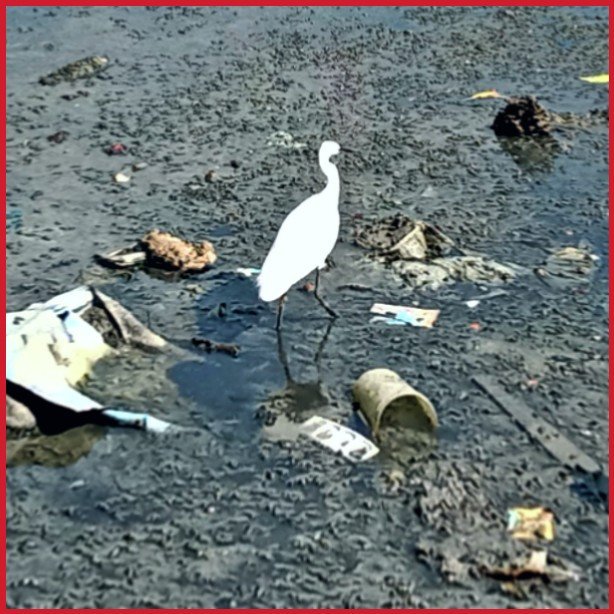Hello all !!!
If you have ever visited one of Lhokseumawe City, it is certainly not complete if you do not visit the coastal area adjacent to one of the water reservoirs or people call it Pusong Reservoir. When you are in the reservoir you can see several species of seabirds or swamps that roam freely in their area.

There are two views that you get when you are in the area, if your presence when the sea water is rising it will see the activities of fishermen and some seaside birds do their activities. However, when you are at low tide you will see a group of cranes walking in the mud looking for food such as small shrimp and small fish playing in low tide puddles.
The cranes that occupy the coastal area next to the reservoir are small or medium sized cranes, they are local cranes that have lived and adapted to mangrove areas that have been growing and developing for a long time.

This bird is very familiar to the local community and he also has a series of names that people attach to him. For people around the region, they will know their characteristics well from the beginning of their lives to the end.
The name given to him also varies in terms of still being in one region or location, well ... To find out his name follow the discussion in the table below.
| 1 | white crane |
|---|
| 2 | enggang |
|---|
| 3 | Keuk Puteih |
|---|
| 4 | Haj luhop |
|---|
| 5 | Ticem aluë |
|---|
| 6 | Gang Puteih |
|---|

The names that have been compiled in the table above are non-verbal names that are often spoken by local people. So he is also very familiar to people who live in the southern region of the reservoir.
People who live close to the cranes' nests have never disturbed or disturbed their existence so that the cranes are more free to look for food in their area, it can even be said that the bird does not feel unfamiliar with the surrounding population. Likewise the fishermen never disturb their existence even the fishermen themselves often provide food in the form of small fish or small shrimp that are caught when at sea.

Now the number is estimated to reach hundreds more or even more than the count, while the nest remains in the usual place that is in the mangrove trees that grow in swamps located northeast.
The village government itself also protects its existence because according to them the stork has lived in the area for a very long time, its existence has existed since the swamps existed.
This is supported also by the discourse of the city government in preserving mangrove trees because it is very important for life around the swamps. Many things have become beneficial with the presence of mangrove trees around the reservoir because it can prevent coastal abrasion from being hit by waves during the wave season when entering December.
So to this day the white heron lives well in the Pusong swamps adjacent to the Pusong Reservoir, so that the population is still in a good stage.
Thus presumably a brief description of a white heron that lives freely with residents in one of the villages of Pusong Lama Lhokseumawe Aceh Indonesia. Thank you very much.
| Photografer | @syuhada73 |
|---|---|
| Location photos | Aceh, Indonesia |
| Camera | MI Note 7 |
| Themes | White storks live comfortably in Pusong Village |
| Reference | own writing |